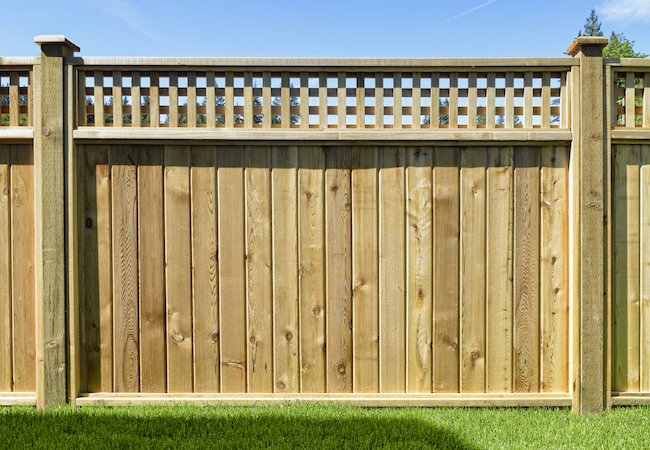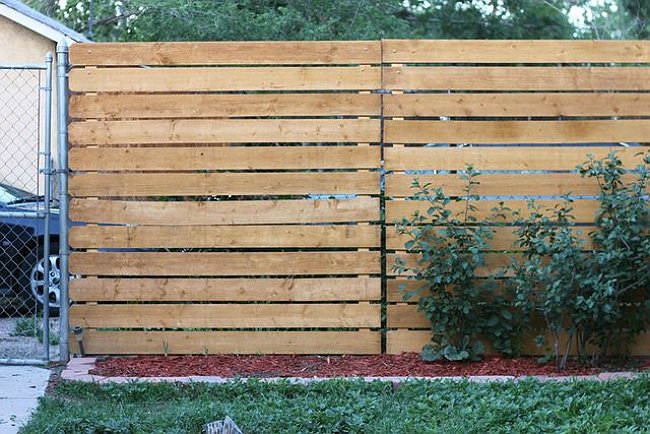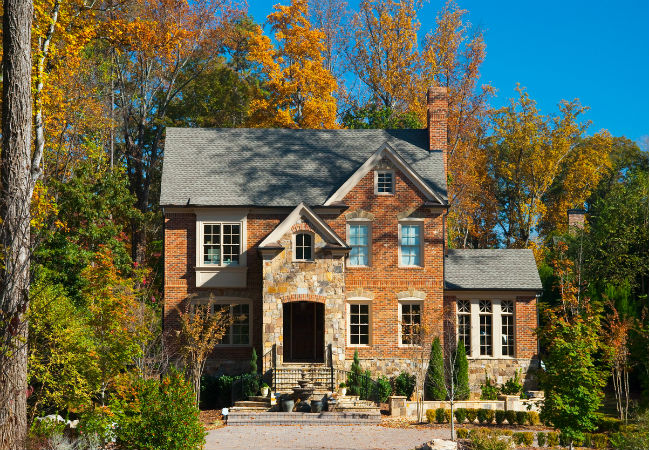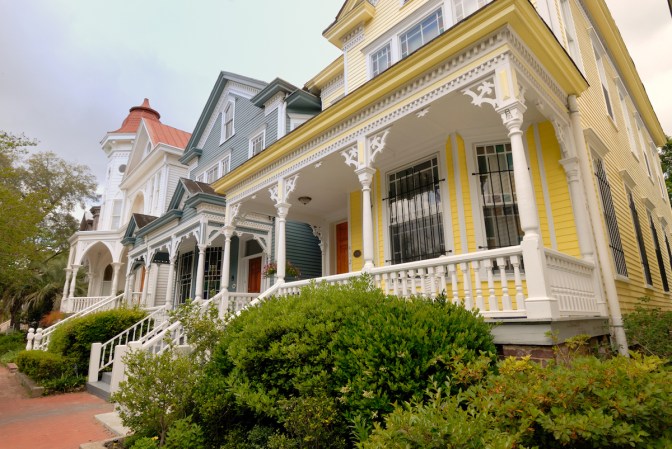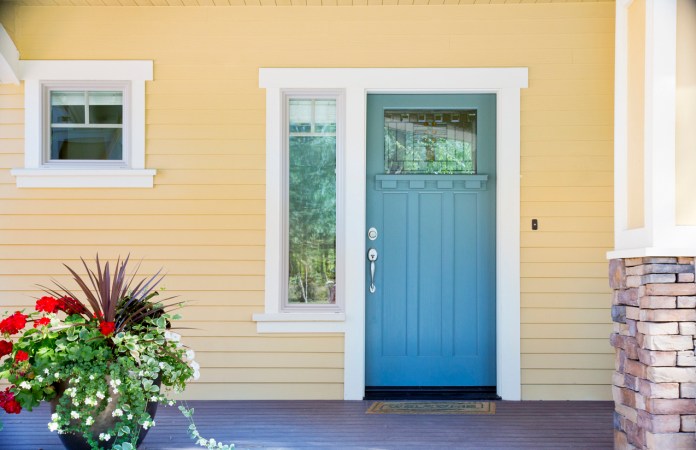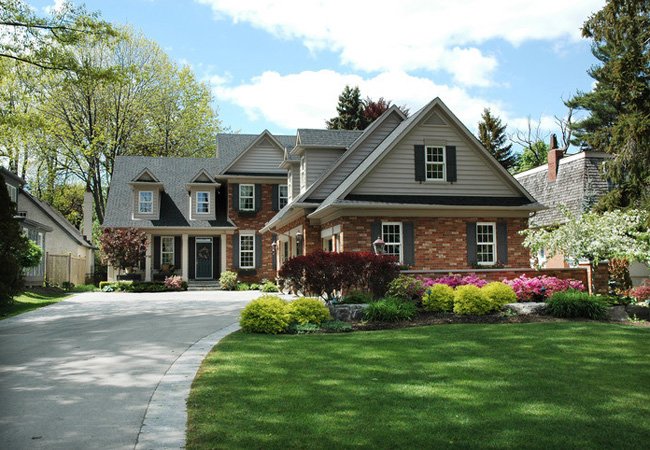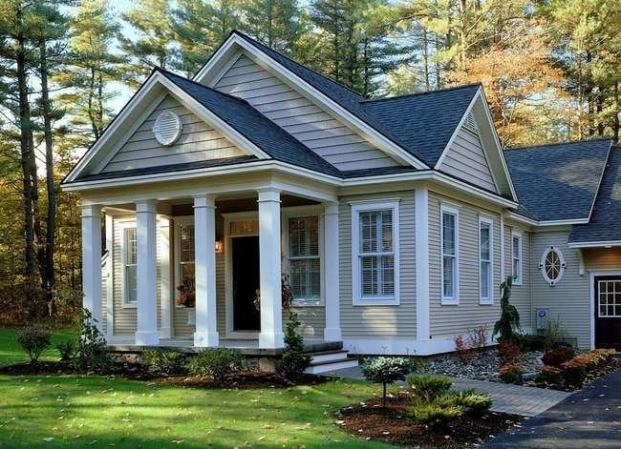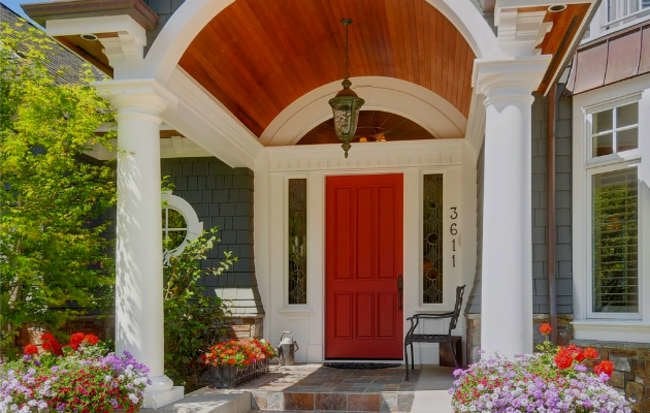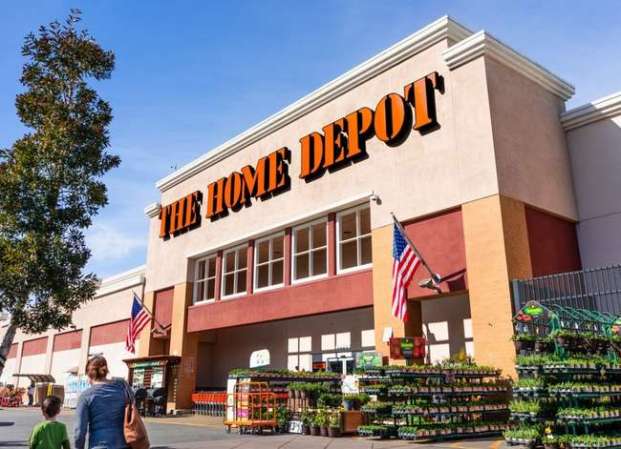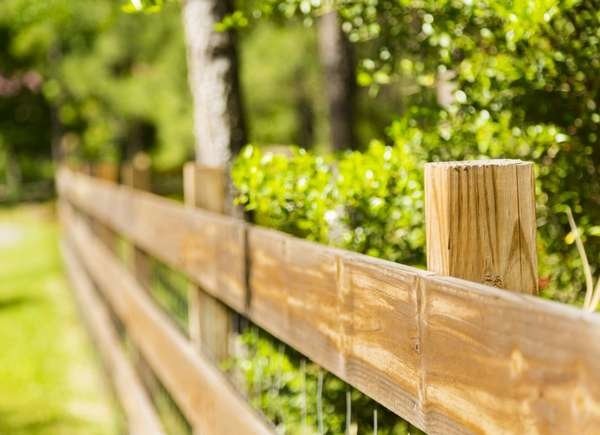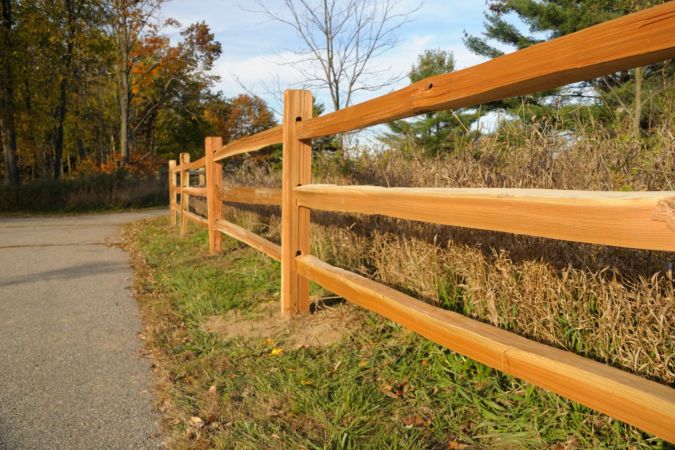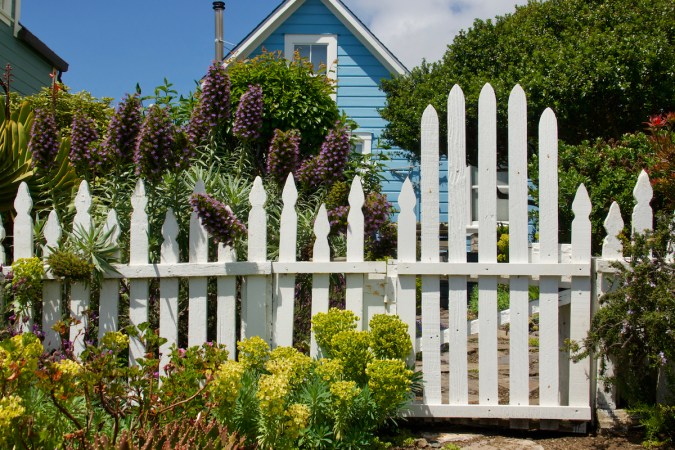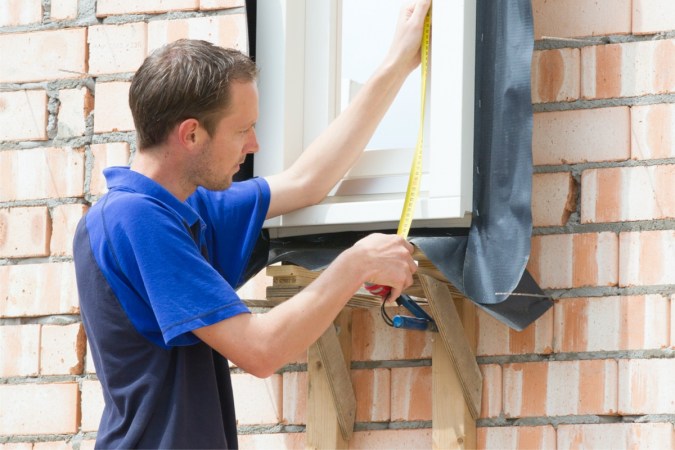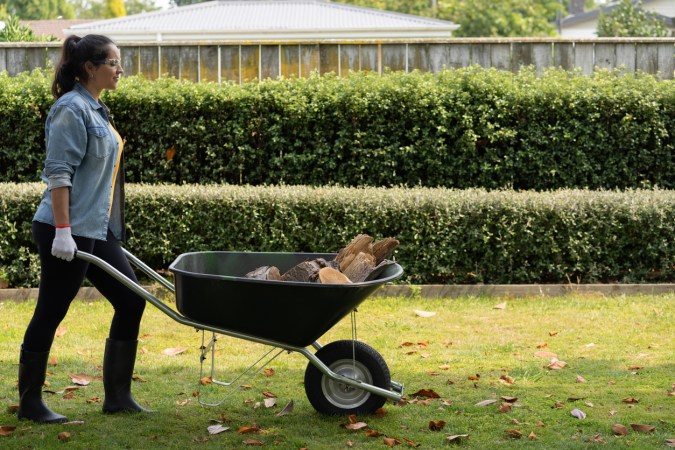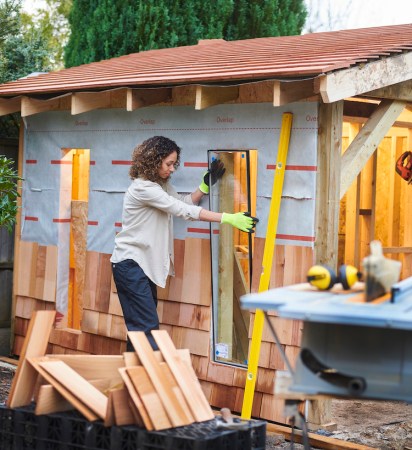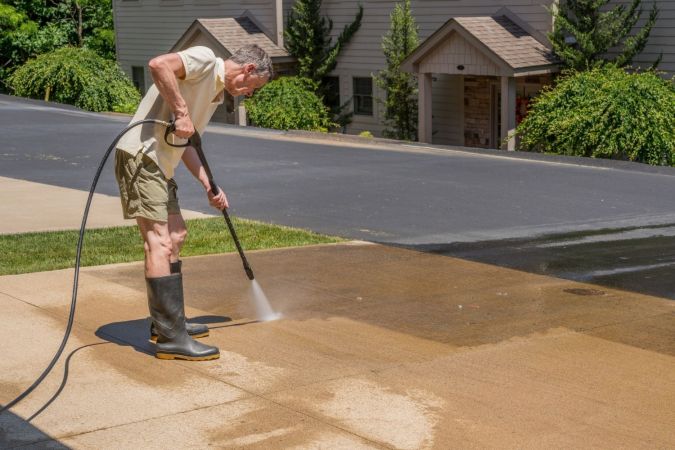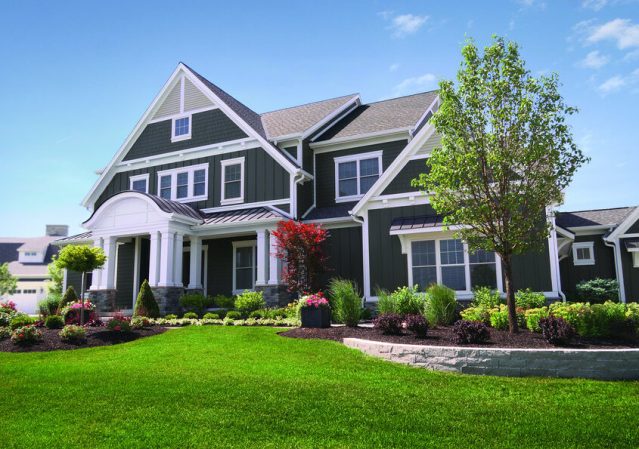We may earn revenue from the products available on this page and participate in affiliate programs. Learn More ›
From the zigzag post-and-rail of the Colonial era to the elaborate molded vinyl styles of today, fences are homeowners’ preferred means of ensuring privacy and deterring unwanted visitors. Whether the goal is to keep your pets safely in your yard or keep neighborhood children out of your pool, there are fencing materials for most every type and shape of property.
Before loading your truck with fencing supplies at the lumberyard, take a few minutes to call your local zoning office to find out what, if any, steps you need to take before erecting a border around your yard. If you’re putting the fence on a property line, you might need to do a lot survey. If you belong to a homeowners association or live in a development that is subject to covenants, you could be restricted to using specific materials and limited on fence height. Once you have a green light, the next step is choosing the right enclosure for your property. Ahead, learn about the most popular types of fencing materials, and the pros and cons of each.
1. Cedar
Cedar, which is perhaps the most sought-after material for backyard privacy fencing, is known for its long-lasting good looks—tight grain, fewer knots, and a desirable red hue—and the fact that it’s unlikely to ever warp or shrink. While cedar naturally resists decay and insects, it is not as impervious to soil as treated wood is and will likely rot after several years.
If you are considering building a cedar privacy fence, it’s a good idea to either secure the fence posts to a concrete base (thus keeping the wood away from soil), or secure cedar pickets to treated wood fence posts. The installation is fairly DIY-friendly, and you can customize the planks to create a variety of looks, including saddleback and lattice-topped.
Maintenance Tip: Cedar naturally weathers to a silvery gray, and a fence of this material will require maintenance, including occasional plank replacement. For long-lasting color and protection, apply a penetrating wood sealant to outdoor fencing immediately after installation and annually thereafter.
Best For: Wood lovers who want flexibility in terms of both style and fence finishes—and those who have a healthy budget.
2. Vinyl
Vinyl fencing has been around for a few decades, but it’s still a relatively new kid on the block. Early vinyl fencing products had a tendency to yellow, sag, or become brittle after a couple of years, but today’s fence manufacturers are putting out durable vinyl products in a variety of heights and styles.
When it comes to quality, thickness counts; thicker gauge, “virgin” vinyl will look best for the longest amount of time (some vinyl fencing products even have a lifetime guarantee). Consider hiring a professional to install this type of fencing, because vinyl fence installation must be precise. If it’s a little out-of-level here or slightly out-of-plumb there, you’ll notice it.
Maintenance Tip: Once it’s installed, vinyl fencing is virtually maintenance-free. Every now and again you may want to use a mild detergent to wash off accumulating dirt, which you can just rinse off with a garden hose. Stubborn mold and mildew stains usually yield after being treated with a bleach and water solution.
Best For: Quick curb appeal and those with large yards who want a bold, clean look.
RELATED: How Much Does a Vinyl Fence Cost to Build?
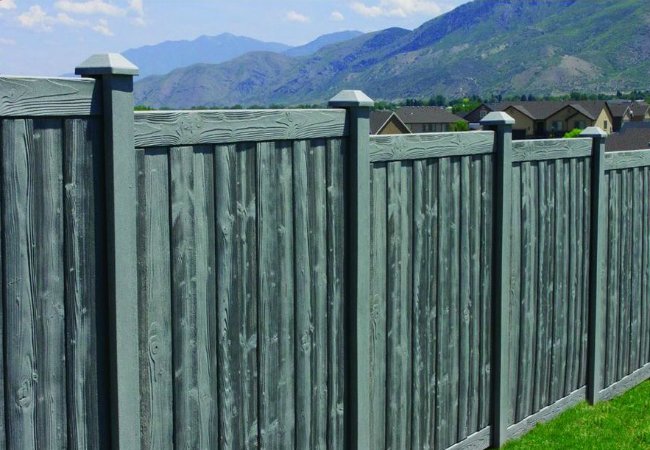
3. Composite
Manufactured from wood fibers that are combined with plastic polymers, composite fencing provides a wood-like look but won’t degrade from insects and rot. This combination of style and substance will cost a bit more than either vinyl or cedar, for both materials and installation.
Like vinyl fencing, composite requires precise installation by professionals. Since the material varies in quality from manufacturer to manufacturer, it’s important to do your research carefully and buy composite fencing components from a reputable dealer.
Maintenance Tip: After professional installation, composite fencing requires only an occasional rinse with water to keep it looking clean.
Best For: Those who want the look of wood without the maintenance that wood requires.
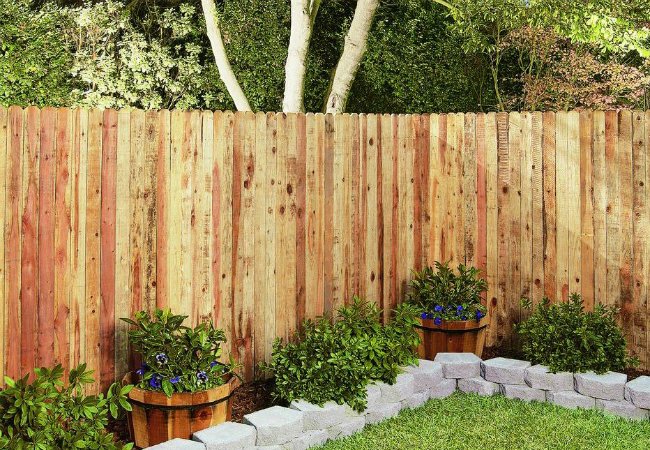
4. Redwood and Teak
You’ll pay top dollar for a redwood or teak fence, but nothing compares to the natural softness and luster of a wood fence crafted from these materials. Because they’re expensive, redwood and teak fences are usually used for small enclosures, like around spas or pools. As is the case with cedar, redwood and teak both naturally resist insects, decay, shrinking, and warping from the elements.
Maintenance Tip: Both redwood and teak require the application of a penetrating sealer or oil once or twice a year to maintain their original color. A light sanding prior to application will remove surface weathering.
Best For: Wood lovers who have a large budget and/or a smaller area to fence, and don’t mind staining and sealing every few years.
RELATED: Buyer’s Guide: The Best Fence Stains
5. Metal
Metal fencing options range from classic to contemporary, and you can find one to match virtually any home exterior. Wrought iron fences have survived centuries of style changes, and with good reason: They don’t just have a classic look, they’re extremely durable.
Consider hiring a specialized fencing contractor if you’re looking to incorporate a wrought iron fence into your property, as these enclosures tend to be custom made to fit the property and might even include intricate styling. Newer metal fencing options such as cast iron, aluminum, and steel package the strength of wrought iron with a more DIY-friendly panel installation. Some homeowners opt for fencing that incorporates both wood and metal elements.
Maintenance Tip: Wrought iron and some steel fences require treatment with a brush-on or spray-on rust-inhibiting paint when they start to show signs of corrosion.
Best For: Homeowners who have a healthy budget and want a fence that will last forever with little maintenance.
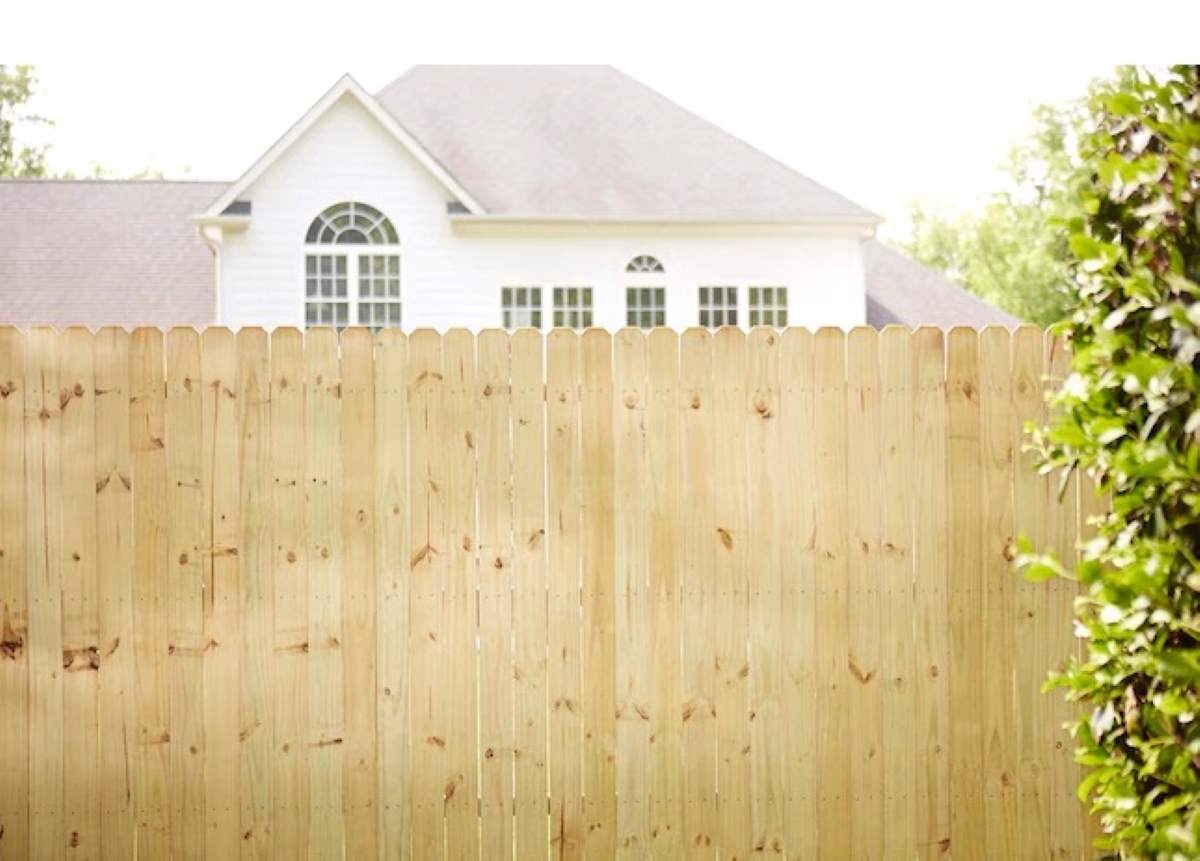
6. Treated Wood
Pressure-treated and chemically treated wood pickets or cedar-style planks are popular picks for outdoor structures as a whole: gazezbos, decks, pergolas, and more. When assembled as a backyard fence, they provide privacy at a reasonable cost. Though this economical type of fencing option is a good choice for fence posts (treated wood resists both insects and moisture), pickets made of treated wood have a tendency to warp or twist, sometimes as soon as one month after installation.
If you’re set on using treated wood planks for your new fence, you’ll have the best shot at a warp-free outcome if you handpick the planks one by one at your local lumberyard, rather than having them delivered in bulk. Look for the straightest planks and skip any that look “green,” or damp, which could mean they have been recently delivered from the manufacturer and are more likely to move as they dry.
Maintenance Tip: Seal or paint treated wood for a better look, and replace warped planks as needed.
Best For: Treated wood is an affordable way to customize the look of a fence or entry into the yard because the shape and size of the planks can be customized, and the color can be altered with paint or stain.
RELATED: How Much Does a Privacy Fence Cost?
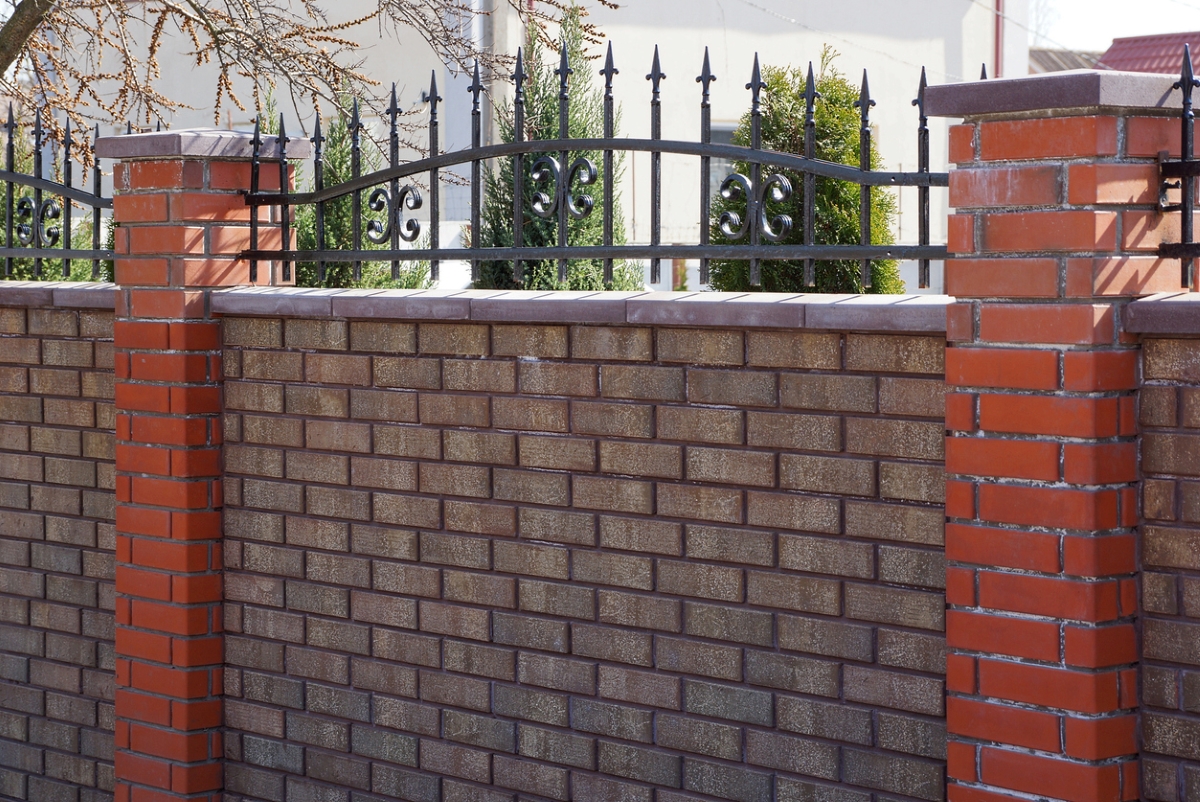
7. Masonry
Fences that are made of concrete, stucco, brick, block, and stone give your home a stately, regal vibe, but at a cost: These materials are all very pricey and require professional installation. Because they’re so heavy, masonry fences also need a structural footing poured below the frost line (the depth to which the groundwater in soil is expected to freeze in winter).
It’s not unusual for homeowners to build a fence that’s a combination of masonry and another type of fencing material, such as wrought iron or wood, for both design and budget reasons. Block and poured concrete require steel reinforcement; brick fences often feature a concrete or block inner fence with brick veneer only on the exterior.
Maintenance Tip: Over time, mortar joints in stone and brick fences can loosen and will need to be repointed.
Best For: Permanent property delineation and upscale curb appeal. Masonry is ideal for properties on busy roads where noise is an issue.
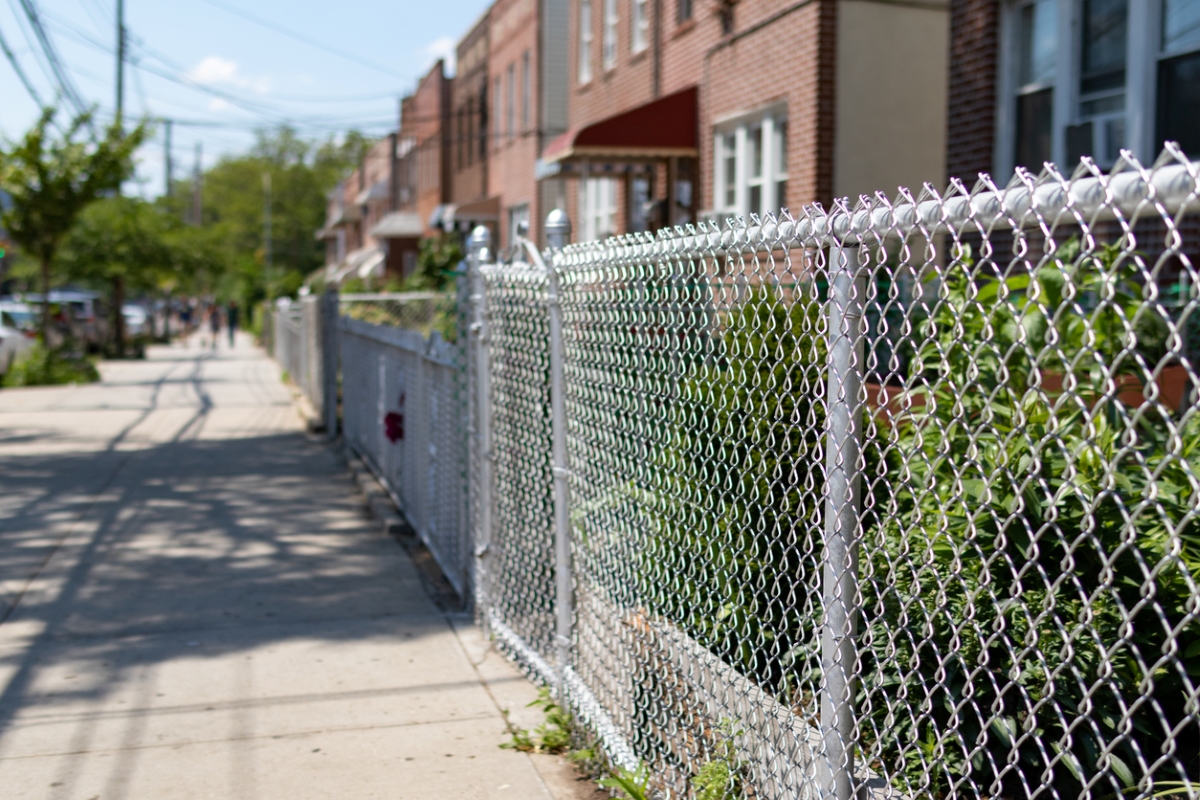
8. Chain Link
While their open links certainly don’t do much for privacy, chain link fences offer adequate security for pets and kids at a competitively low cost. The materials are among the least expensive fencing options available, making chain link fencing a common fence for yards on large rural properties where the amount of fencing needed makes other choices cost-prohibitive. In addition to economical materials, chain link fencing can be a DIY installation—one that involves setting posts, installing a top rail, and then stretching linked mesh between the rails and posts— that saves homeowners more money.
Maintenance Tip: Chain link can corrode, especially at the junctions where the mesh links meet, but it’s difficult to prevent. For a better look and a longer life, consider upgrading to vinyl-coated chain link.
Best For: Large homesteads, commercial properties, and rural land that require extensive linear foot coverage, and where curb appeal is not a priority.
RELATED: 11 Living Fences That Look Better Than Chain Link
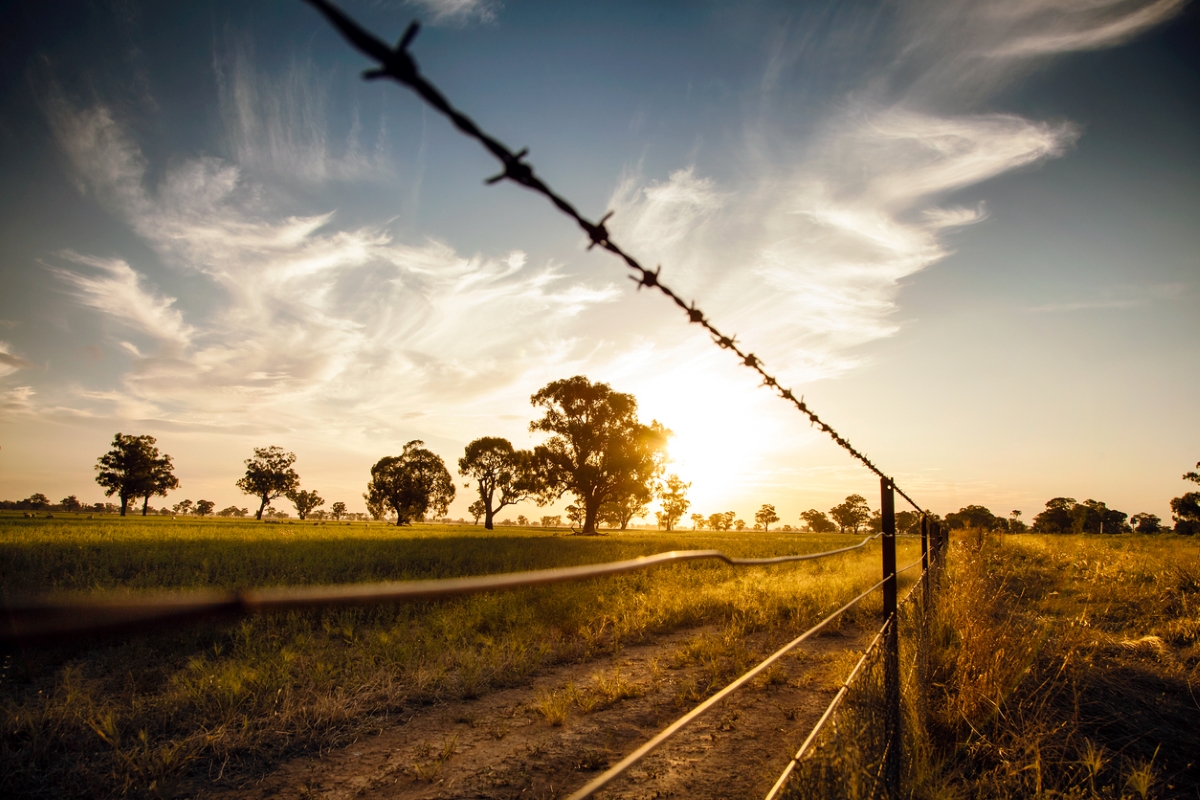
9. Barbed Wire
This type of fence is strictly functional, usually set up to keep livestock in and natural predators out. Its standard design is simple and affordable enough for property owners looking to fence in a larger area: Five strands of barbed wire are strung taut between metal T-posts around the perimeter of the property, with heftier wood or steel posts installed at the corners to support the tension of the stretched wire.
Before you install it, know that barbed wire fencing is limited to rural use and prohibited in most residential communities.
Maintenance Tip: Barbed wire strands should be restretched from time to time. They tend to sag if livestock leans on them.
Best For: Rural properties where containing animals is a priority, and curb appeal is not a factor.
RELATED: The Most Affordable Ways to Fence in a Yard
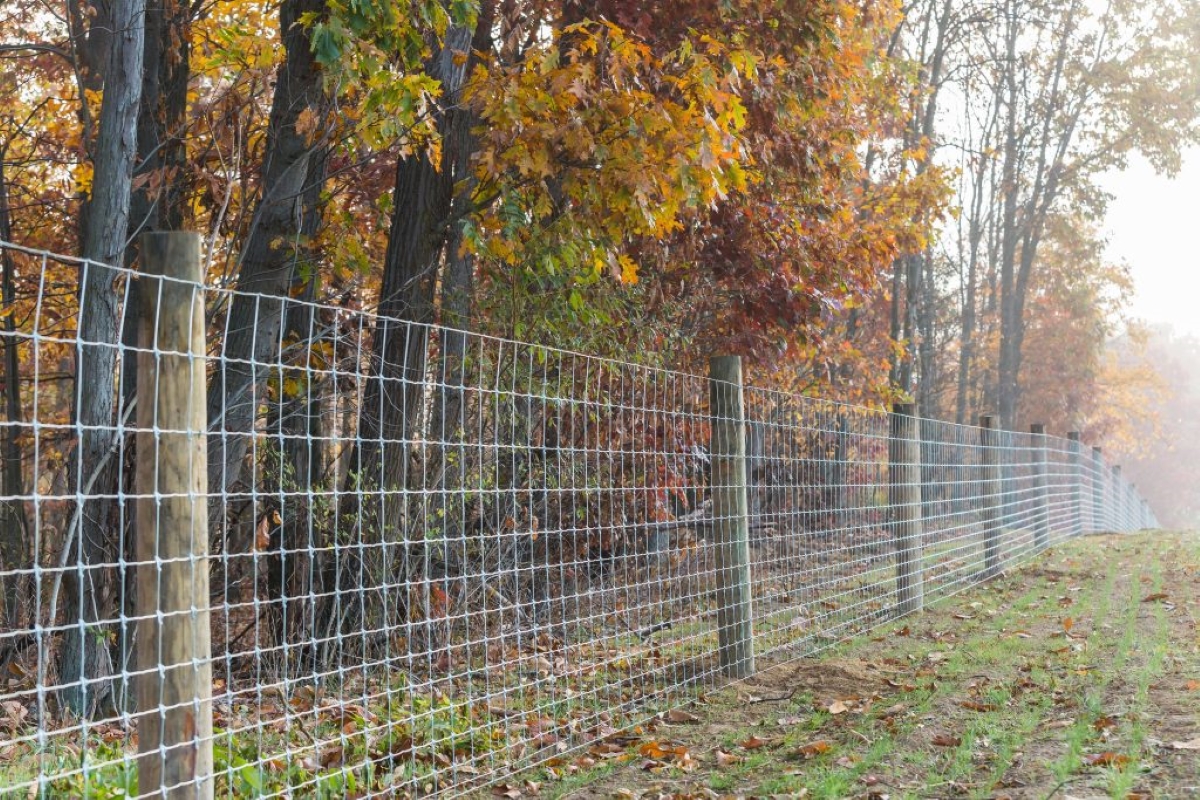
10. Woven Wire
Low-maintenance, inexpensive, and effective at deterring wildlife from getting easy access to a property, woven wire is an affordable fencing option. Sometimes called field fence, woven wire fence is an ideal complement to an open fence, like three rail or split rail, for properties where egress needs to be restricted. It’s also a good choice for pet owners who don’t want animals to get out and pool owners who don’t want people to get in.
Maintenance Tip: Adding wire tighteners to the fence and checking them a couple times a year will keep the wires taut.
Best For: An addition to another fence system, like split rail, to deter passage on to or from a property.

